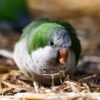- How Long Does A Quaker Parrot Live? - 17 May 2024
- 4 Hacks on Keeping Your Home Clean With Pets - 28 March 2024
- 5 Things to Know Before Bringing Home a New Kitten - 26 March 2024
Serpae tetras are a fast moving fish that thrive in schools. They’re quite sociable and get along with other tetra species but they should be kept away from slower tank mates. Feed your tetras high quality flakes or pellets and supplement their diet with live foods such as brine shrimp, bloodworms and daphnia. Avoid feeding them a diet heavy in vegetable matter however.
Species Profile
| Characteristic | Description |
| Common Name | Serpae Tetra |
| Scientific Name | Hyphessobrycon eques |
| Family | Characidae |
| Origin | South America |
| Size | Up to 1.5 inches (4 cm) |
| Lifespan | 3 to 5 years |
| Tank Size | 10 gallons or larger |
| Diet | Omnivorous |
| Breeding | Egg layers, separate breeding tank |
How to Setting Up the Ideal Aquarium of Serpae Tetra
Here’s a step-by-step guide to help you set up a suitable aquarium for Serpae Tetras
Tank Size
Serpae Tetras are small fish, but they are active and social, so it’s best to keep them in a group of at least six to eight individuals
Filtration
Use a reliable and adequately sized aquarium filter to maintain good water quality. Serpae Tetras are sensitive to water parameters, so regular filtration is essential.
Substrate
A fine gravel or sand substrate is suitable for Serpae Tetras. They like to forage at the bottom. So choose a substrate that won’t harm their delicate barbels
Decor and Plants
Serpae Tetras appreciate a well planted tank. Use live or artificial plants to provide hiding spots and create a natural look.
Water Parameters
Maintain water conditions that mimic their native habitat, which is typically slightly acidic to neutral.
- Temperature: 72-79°F
- pH: 6.0-7.0
- Hardness: 4-10 dGH
Setting Up the Ideal Aquarium
Serpae Tetras thrive as schooling fish. It’s important to keep them in schools of six or more individuals. Smaller groups may become aggressive and they can even nip fins of other tank mates. These tetras are more likely to bother slower moving or longer finned fish but they should be fine with most other freshwater species. A 20 gallon tank size for these fish and you’ll want to make sure they have plenty of room to swim around.
Use dark sand to replicate their native habitat in the Amazon River basin and include plenty of plants and hiding places. Be wary of introducing these fish to tanks that contain other fishes that are known as fin nippers such as Black Skirt Tetras or Buenos Aires Tetras. Such introductions will lead to stress which can lead to disease in these sensitive tetras. This fish should also be kept away from aggressive fishes such as bettas and guppies. Both magic colors of tetra fish in the aquarium

Water Quality and Maintenance
With its emerald like luster the Serpae Tetra is a visual treat. While their base coloration can vary from olive brown to a fiery scarlet hue. They all boast an entrancing sheen that shimmers in the light. They prefer soft water that has a slightly acidic pH level and a dark colored substrate. Ideally you should add peat or blackwater extract to your tank as well. Since this helps mimic their natural habitat in the Amazon River.
Since these fish are accustomed to slow moving waters. You should also use a filter that doesn’t cause too much turbulence in the aquarium. This helps to keep your tank healthy and reduces the risk of disease. Serpae tetras are omnivorous and will consume a wide range of flakes pellets and live or frozen foods.However it is important to keep in mind that they tend to be more aggressive than other tetras when it comes to nipping at long finned tank mates like axolotls and kuhli loaches.
Feeding Your Serpae Tetras
Serpae Tetras require a diet rich in high quality flakes and pellets. They also enjoy the occasional blood worm or brine shrimp nauplii. These fish are omnivores by nature and will eat most foods offered to them. They get along well with other tank mates but they should be kept in groups of at least six to prevent them from feeling threatened or overcrowded. Which can lead to their characteristic fin nipping behavior. In groups they are more peaceful and spend more time exploring their surroundings.
A well made tank can replicate their natural habitat quite well with the right water parameters. Consider using blackwater extract, tannins or aquarium safe peat to help reduce the water hardness and PH. A small breeding tank should have very soft water and dark lighting. It should also have a breeding mop to catch any emerging fry and prevent them from falling to the bottom of the tank where they would be at risk of becoming food for other tank mates.

Health and Disease Management
Like all fish Serpae Tetras are prone to a variety of ailments that can be prevented by keeping water tank hygiene standards and ensuring they get a healthy diet. Because these tetras are such beautiful and easy to care for fish. They are ideal for newer aquarists who want to enjoy the joys of aquarium ownership without worrying too much about disease management. In the wild Serpae Tetras live in calm black waters with dense vegetation. So it is important to replicate this environment in their aquarium.
The filtration system should create a soft flow of water as these tetras don’t thrive in turbulent environments. They should be fed a mix of high quality flake food and live or frozen bloodworms and brine shrimps. Several small feedings of these foods throughout the day are recommended but the aquarist should only feed them what they can consume in a few minutes so that uneaten food does not spoil the water quality.
Breeding Serpae Tetras
Serpae Tetras can be quite easy to breed as long as the breeding tank is set up correctly. The natural habitat of these fish has murky waters with thick vegetation so it’s important that an aquarist replicates this environment. Adding aquarium safe peat or a layer of fine leaved plant matter to the water can buffer the pH towards acidity and add organic elements that help these fish thrive. Once the tank is cycled and the PH ammonia and nitrate levels are ideal.
It’s time to get your fish ready for spawning. It’s important to remove both male and female fish from the breeding tank after spawning to prevent the parents from eating the eggs or fry. The resulting eggs should hatch within a few days and the fry need to be fed cultured infusoria or commercially available baby brine shrimp nauplii until they large enough to eat crushed flakes.
Serpae Tetra male vs female
Male and female Serpae Tetras are generally similar in appearance, with both displaying vibrant red coloration and a black diamond-shaped spot on their bodies. However, males tend to be slightly smaller and more streamlined while females are typically larger and have a rounder, fuller appearance especially when they’re carrying eggs. It can be challenging to distinguish them solely based on physical characteristics, so observing their behavior during breeding periods can be more reliable for identification, as females may become rounder when full of eggs and males may exhibit more aggressive or territorial behavior.
Behavioral Insights
Providing Serpae Tetras with the proper environment, tank setup and care schedule can help you to enjoy your fish for as long as possible. Watch for signs of stress and illness such as fading color or rapid changes in water parameters. Keeping your tanks clean well maintained and stocked with a variety of foods can help to prevent these issues. Using a test kit regularly can allow you to keep track of pH, ammonia and nitrate levels to ensure they are stable and within the ideal range.
Offering a high quality flake food supplemented with frozen and live foods will provide your fish with the nutrients they need for optimal health and wellbeing. Feed your fish two to three times a day but only feed them the amount of food that they can consume in 3 minutes or less to avoid overfeeding. Do not keep your tetras with fish that have long flowing fins as they may nip the fins of these species.
Popular on Social Media
Serpae tetras trending on reddit social media due to their vibrant colors popularity among aquarium enthusiasts and the sharing of breeding successes, educational content, aquascaping designs, challenges, contests and environmental awareness related to these fish. To find the specific reasons for the trend it’s best to check current social media posts and discussions
Wrap up
Serpae Tetras can be a rewarding experience for aquarium enthusiasts. By maintaining their ideal tank conditions providing a balanced diet and ensuring they have compatible tankmates. You can enjoy the vibrant colors and playful behavior of these beautiful fish. Remember to keep a close eye on water parameters and address any issues promptly to keep your Serpae Tetras happy and healthy. With proper care and attention these fish can thrive and bring life to your aquarium for years to come.
















